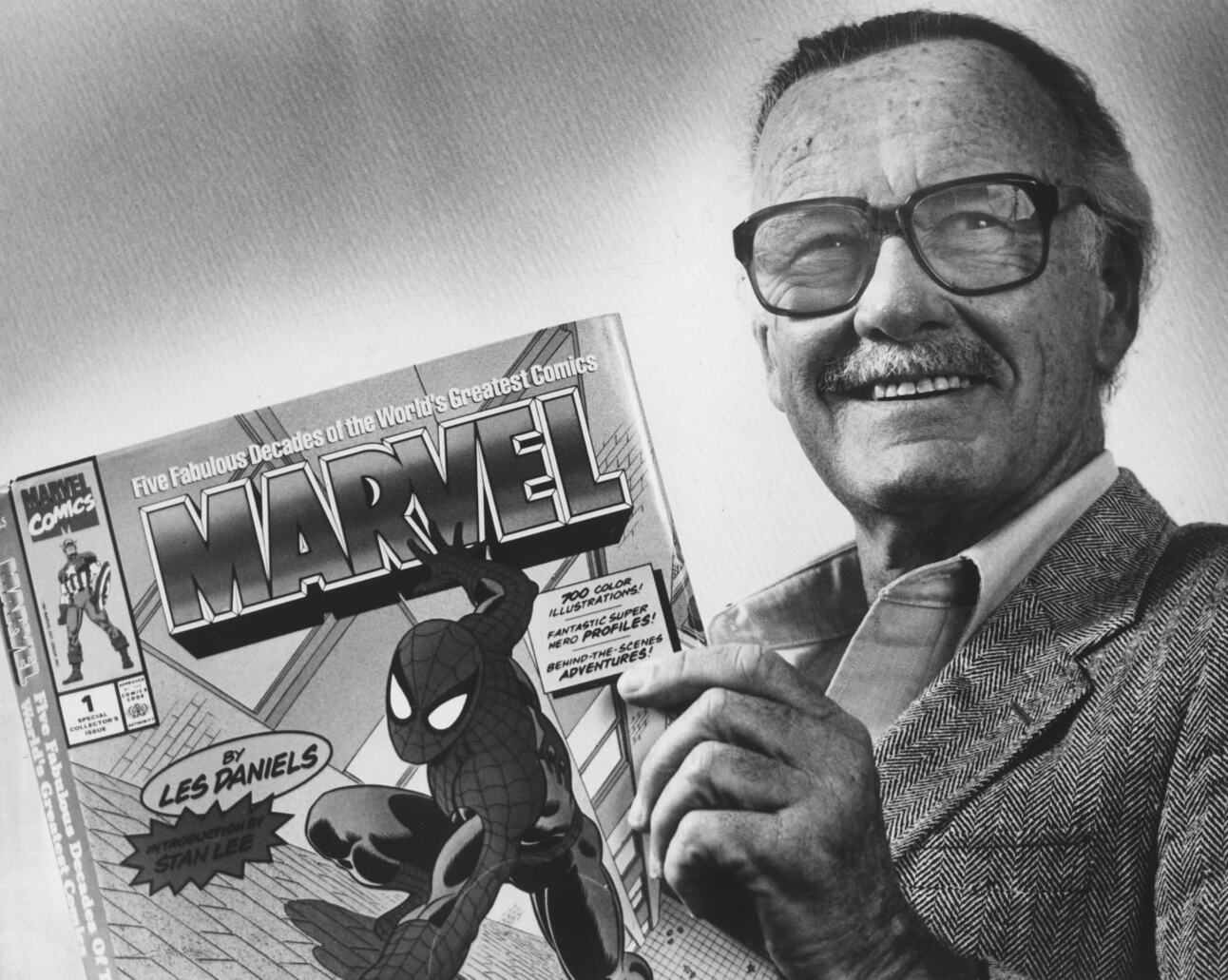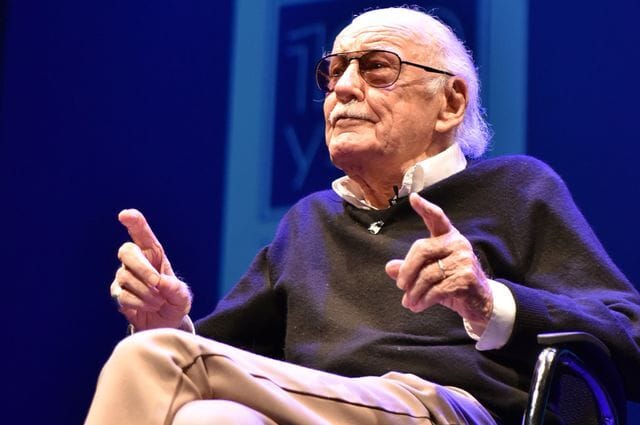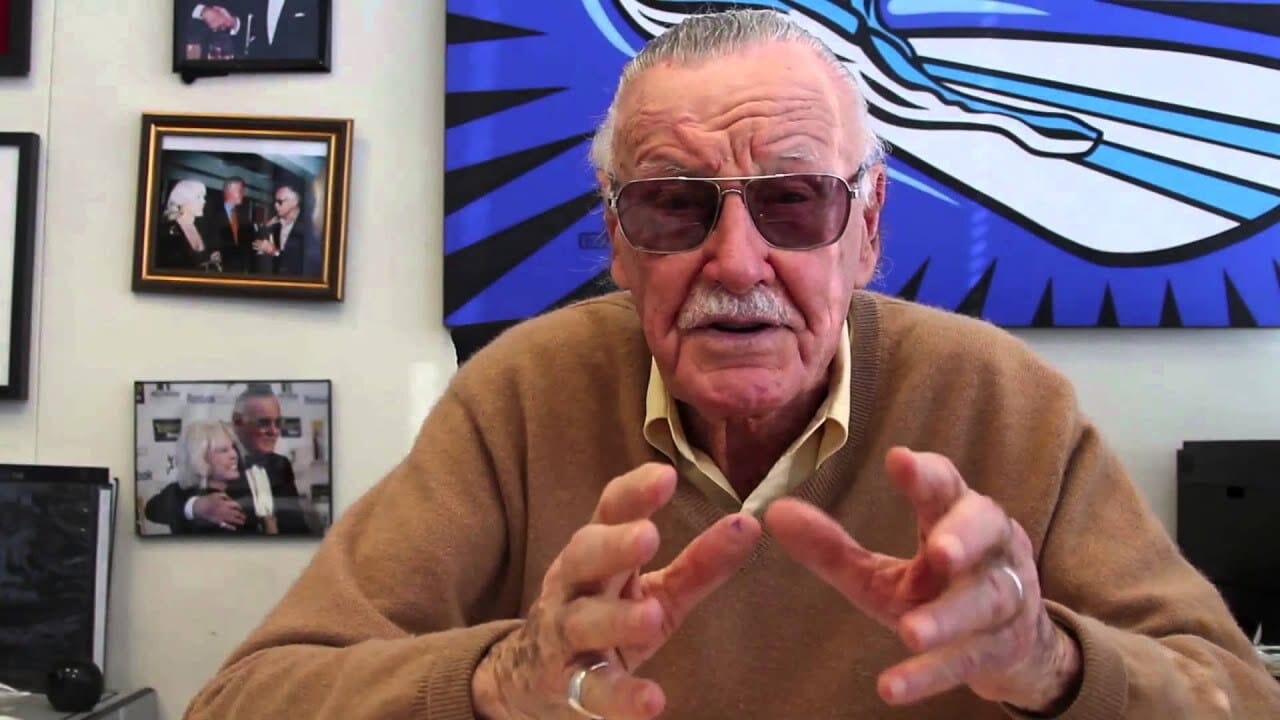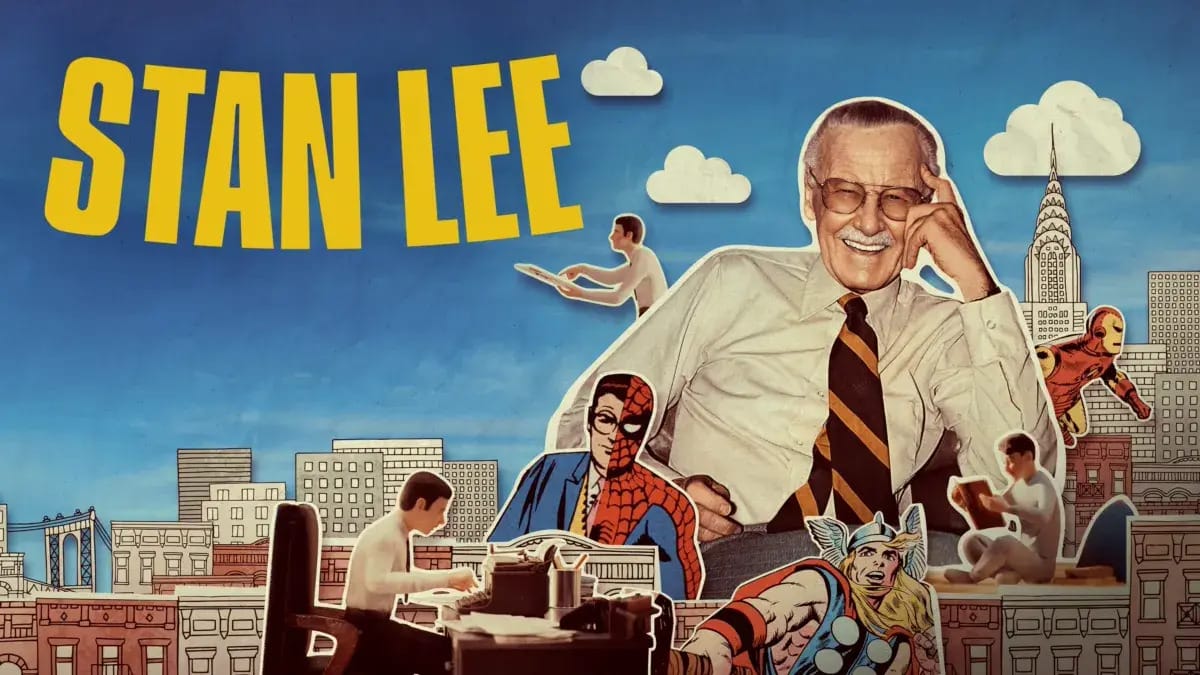- The Weekly Mensch
- Posts
- The Weekly Mensch: Stan Lee
The Weekly Mensch: Stan Lee
The life and stories of the superhero who created super-humans because he understood his great power came with great responsibilities
Us in a Nutshell
We are passionate about the lives, the impact, and the experience of Jewish baby boomers who have changed our world. From finance to the arts, we write about the stories of contemporary heroes who — significantly and meaningfully — changed the face of their respective industries, often starting with nothing but a legacy of exile. We tell their stories for the timeless lessons of intelligence, ethics, and resilience they underline. And we also share some fun anecdotes! Nathan Tob is a fourth-year student at the Queen Mary University of London. He studies Economics, Finance, and Management. Davy Sokolski is a third-year student at Columbia University in New York. He studies International Political Economy.
What is a Mensch?
Leo Rosten defines mensch as “someone to admire and emulate, someone of noble character.” Dr. Saul Levine writes in Psychology Today that a mensch’s personality characteristics include decency, wisdom, kindness, honesty, trustworthiness, respect, benevolence, compassion, and altruism.
Stan’s Rapid Bio

Credit: NBC News
Stan Lee, born Stanley Martin Lieber on December 28, 1922, in Manhattan, New York, was the son of Romanian-Jewish immigrants Celia and Jack Lieber. Growing up in a modest household during the Great Depression, he developed a love for storytelling and dreamed of writing the “Great American Novel.” However, his path led him into the comic book industry, where he would revolutionize popular culture.
At 17, Lee started as an assistant at Timely Comics (which later became Marvel) and worked his way up to editor by 19. Initially, he saw comics as a stepping stone to more "serious" writing, but that changed in the 1960s when he co-created Spider-Man, The X-Men, The Fantastic Four, Iron Man, and countless other iconic superheroes alongside artists Jack Kirby and Steve Ditko. Unlike traditional superheroes, Lee’s characters were flawed, human, and struggled with everyday problems—making them relatable to readers in a way comics had never been before.
Lee wasn’t just a writer; he was Marvel’s ultimate showman. With his infectious energy, he became the face of the brand, popularizing phrases like "Excelsior!" and pioneering fan engagement through letters and editorials. His creative vision helped Marvel evolve from a struggling comic book publisher to a multimedia empire spanning movies, television, and merchandise.
Beyond comics, Lee championed diversity and social justice, using his platform to tackle issues like racism, prejudice, and political corruption through allegorical storytelling. He believed superheroes weren’t just entertainment—they were modern mythology that could inspire and challenge audiences.
Even in his later years, Lee remained an active part of the Marvel universe, making legendary cameo appearances in Marvel films and engaging with fans worldwide. He passed away on November 12, 2018, at the age of 95, leaving behind a legacy that transformed pop culture. Stan Lee didn’t just create superheroes—he reminded us that heroism exists in everyone and that the real power lies in imagination, perseverance, and the belief that "With great power comes great responsibility."
Stan’s Life Lessons
1. With great power comes great responsibility
Stan Lee didn’t just write superheroes—he wrote about what it meant to be human. One of his most enduring contributions to storytelling is the famous line from Spider-Man: “With great power comes great responsibility.” While originally attributed to Peter Parker’s Uncle Ben, the sentiment reflects Lee’s own philosophy on power, influence, and the duty to use one’s talents for good. This wasn’t just a catchphrase, it was a guiding principle that shaped the moral fabric of Marvel’s heroes. Unlike the flawless superheroes of the past, Lee’s characters struggled with the weight of their abilities. Spider-Man, for example, wasn’t just a hero—he was a teenager balancing school, family, and the guilt of past mistakes. The X-Men weren’t just superheroes—they were outcasts facing discrimination, mirroring real-world social struggles. Lee’s characters taught readers that having power, whether physical, intellectual, or societal, meant taking responsibility for others. This belief wasn’t confined to the pages of comics. Stan Lee used his platform to champion issues of justice, equality, and inclusion. At a time when civil rights were at the forefront of American discourse, he wrote The X-Men as an allegory for the struggles of marginalized communities. In Stan’s Soapbox, a column he included in Marvel comics, he regularly spoke out against bigotry, stating: "Racism and bigotry are among the deadliest social ills plaguing the world today." He believed that storytelling had the power to inspire change and that creators had a duty to use their influence responsibly.
Lee’s lesson is one that extends far beyond comics. Power should never be used for self-interest alone. True greatness comes from recognizing how our abilities—our influence, our knowledge, our voice—can be used to uplift others. His legacy reminds us that responsibility isn’t a burden, it’s an opportunity. In a world that often prioritizes power for personal gain, Lee’s words challenge us to ask: What will we do with the power we have?
2. What are we but humans?
Stan Lee didn’t just create superheroes—he redefined them. Before him, comic book heroes were untouchable, godlike figures, flawless in strength and morality. But Lee saw something different. He believed that true heroism wasn’t about perfection but about resilience, growth, and confronting one’s flaws. This is why Peter Parker wasn’t just Spider-Man—he was an insecure teenager juggling school, responsibility, and guilt. The X-Men weren’t just super-powered mutants—they were outsiders fighting prejudice. Even Tony Stark, the genius billionaire behind Iron Man, battled personal demons like arrogance and self-destruction. By making his characters flawed, Lee made them relatable, proving that struggle is not a weakness, it’s part of what makes a hero. This idea was deeply rooted in Lee’s Jewish heritage. Jewish storytelling has long embraced flawed, complex heroes, from Moses—who doubted his own ability to lead—to King David, whose greatest strengths came alongside his greatest mistakes. The concept of Tikkun Olam emphasizes that the world is imperfect and that our role is to improve it, despite our own shortcomings. Lee echoed this belief in his work, showing that even those who feel like outcasts or underdogs can rise to greatness. In a 2013 TEDx talk, he said, “To me, the human aspect of a superhero has always been the most important part. By that I mean we assume a superhero might be extra-strong [...] but unless you care about the superhero’s personal life, you’re just reading a shallow story.”
Lee’s career is an ode to humanity in all its fragility. He proved that the most inspiring characters are not those who are invincible, but those who fight through their weaknesses. By making superheroes deeply relatable, he didn’t just entertain—he educated. He showed generations of readers that strength is not the absence of struggle, but the ability to rise despite it. As Tom Hanks put it in his 2023 Harvard Graduation Speech: “All of us are able, none of us are super, but what are we if not human?” Lee answered that question through every story he told: We are flawed. We are resilient. And that is what makes us heroes.
3. Creativity has no expiration date
Stan Lee didn’t believe in retirement—he believed in reinvention. While many people slow down in their later years, Lee only seemed to accelerate. At an age when most stepped away from their careers, he was still shaping pop culture, creating new characters, and engaging with fans. At 39, he revolutionized comics by launching The Fantastic Four—a radical shift from the simplistic superheroes of the time. At 40, he introduced Spider-Man, and at 50, he was expanding Marvel into television and film. But his greatest resurgence came later in life. Well into his 70s, Lee became the face of the Marvel Cinematic Universe, making his now-legendary cameo appearances in blockbuster films. Even in his 90s, he was still developing new projects, co-writing books, and sharing his love of storytelling. His relentless creativity proved that passion has no age limit. One of his most inspiring late-career projects was Stan Lee’s Mighty 7, a superhero series he created at the age of 91—an age when most would have long stopped innovating. When asked why he continued working, he responded with his signature enthusiasm: "Why stop? If I’m having fun, and if I still have ideas, why in the world would I slow down?"
Lee’s story reminds us that creativity isn’t something that fades with time—it evolves. Too often, people believe that their prime years for innovation or success are behind them, but Lee proved otherwise. There is always room to create, to grow, and to make an impact. His life is proof that as long as we stay curious and passionate, there’s no limit to what we can achieve—at any stage of life.
The Quote of The Week
“If you have an idea that you genuinely think is good, don’t let some idiot talk you out of it. I think you can only do your best work if you’re doing what you want to do and if you’re doing it the way you think it should be done”



Reply